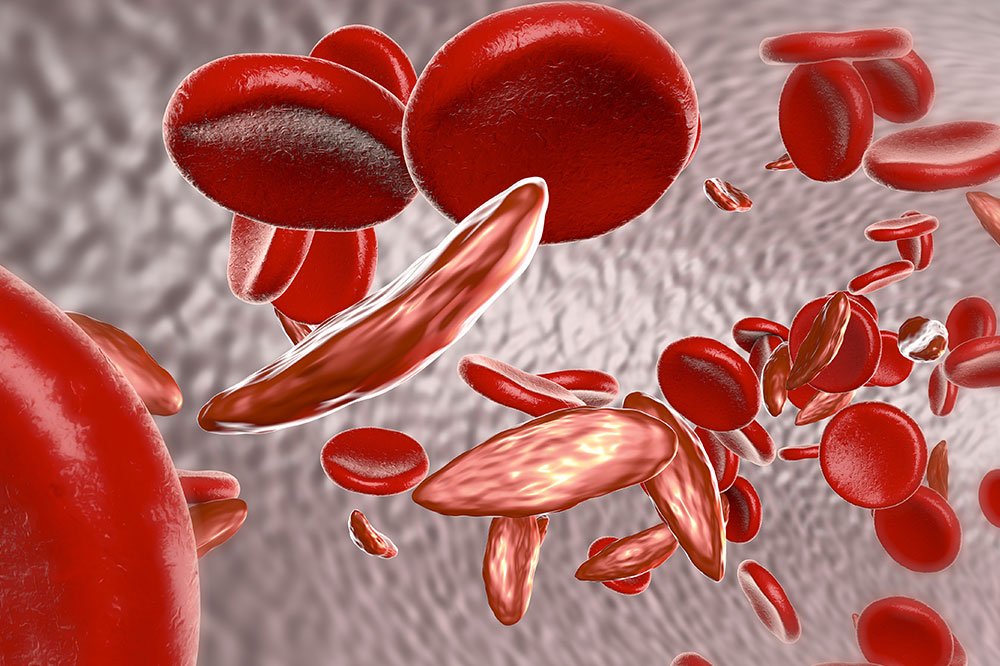Sickle cell anemia: Symptoms, causes, and treatment

A disorder in which a patient experiences a deficiency in red blood cells due to mutation is called sickle cell anemia. When one suffers from such a disease, the production of healthy red blood cells that are round and biconcave gets disrupted and the body produces sickle-shaped cells with pointed ends. These cells are rigid and can not travel easily through the blood vessels.
Causes
Sickle cell anemia is an inherited disorder that is caused when the hemoglobin alpha and beta genes undergo mutation. As a result of this mutation, patients suffering from this disease produce abnormal hemoglobin that is rigid and malformed.
Symptoms
A variety of symptoms are observed in sickle cell anemia patients, the most common ones are
- Vision-related problems
When mutated red blood cells travel to the eyes through the thin optic blood vessels, they can obstruct blood flow to the eyes. As a result, the retina doesn’t get sufficient nutrition and oxygen, which can cause vision-related problems like blurriness and even partial blindness. - Swelling
The unusual shape and sharp edges of sickle cells cause them to get stuck in the blood vessels, which results in the blockage of blood flow to various parts of the body. Such a blockage causes swelling and inflammation in the parts where the blood doesn’t flow, such as the hands and feet. - Infections
Sickle-shaped cells that are formed in this type of blood disease cause a lot of damage to the spleen. As a result, the body’s defense against antigens gets compromised, which can make patients vulnerable to frequent infections and ailments. - Intermittent pain
People suffering from sickle cell anemia often experience abrupt episodes of pain, which normally occurs in areas like the chest, abdomen, and joints.
Treatment
Unfortunately, there isn’t yet a definitive cure that will completely get rid of sickle cell anemia in a patient. However, the symptoms that accompany sickle cell anemia in children and young adults can be better managed using certain treatment options so that the patient can live a relatively normal life. The most common procedure that helps prevent hypoxia and other extreme symptoms of sickle cell anemia is blood transfusion. A stem-cell transplant performed in the early stages of the disease may help cure sickle cell anemia.
Foods to eat
When a patient suffers from sickle cell anemia, it is important that they get all the essential nutrients that their body needs to properly function. As a rule of thumb, patients must include a lot of fruits and vegetables in their daily meal regimen. Such an inclusion helps patients get the right amount of macro and micronutrients. Adding calcium-rich foods such as leafy greens, yogurt, and tofu can also be beneficial. Drinking plenty of fluids, especially water, is a crucial step to take when dealing with sickle cell anemia.